Freepost
City, country, Europe – how the art world grows together
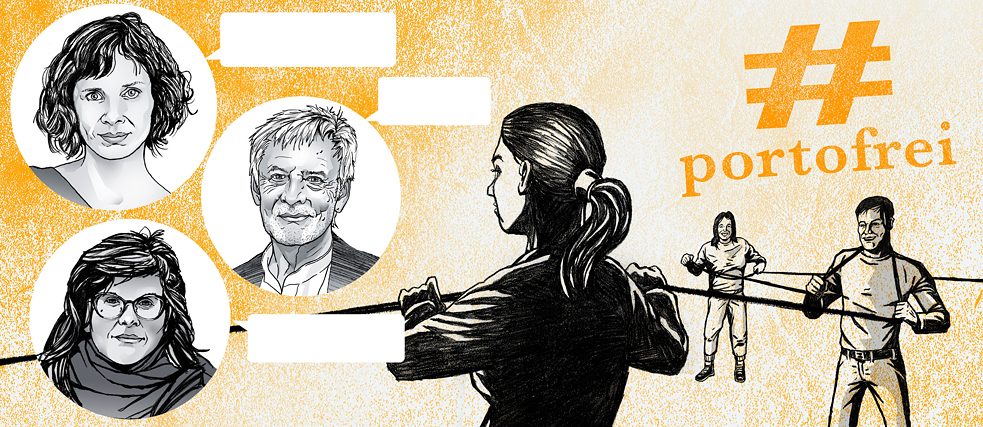
Art may not know any boundaries, but the art world certainly does. So how can curators become better networked – and make a stand for their shared values? This will be discussed by Simona Da Pozzo, Gottfried Hattinger and Hajnalka Somogyi – and you can join the debate! Leave us your views and questions: in the comments field on this page or on Facebook and Twitter using the hashtag #freepost.
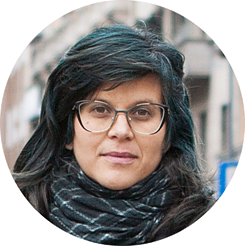 Photo (detail): Emilia Castioni
As a response to the current dark situation for culture, art and citizenship (both from a political and economic point of view), in the last years we have seen the birth of a big number of independent artist-run projects, spaces and events. Some of those have a professional-trade-union vocation, some others turn into an activist activity, and some merge the two faces together as, for example, Non Riservato network does.
Photo (detail): Emilia Castioni
As a response to the current dark situation for culture, art and citizenship (both from a political and economic point of view), in the last years we have seen the birth of a big number of independent artist-run projects, spaces and events. Some of those have a professional-trade-union vocation, some others turn into an activist activity, and some merge the two faces together as, for example, Non Riservato network does.It seems to me that now the most interesting strategies are networking, meant as relational regeneration, and citizen participation, as is the case in the following examples:
Nesxt, an independent art network creating an intellectual and artistic exchange between independent collectives, spaces and projects.
Artists and curators are turning into city makers and cultural shakers
A Cielo Aperto, a project held in Latronico that was founded directly by citizens. With a very small budget, they work together with local inhabitants each year to produce a work in a public space.
So artists and curators are turning into city makers and cultural shakers assuming roles that have been emptied of passion and vision, to find new perspectives. They are participating in this global rush of re-appropriation of the public arena, often filling the gaps between people.
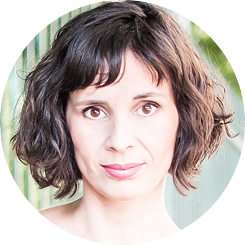 Photo (detail): Csaba Aknay / Orbital Strangers
When it comes to realizing art projects outside the institutional framework, commitment is as important as financial resources. OFF-Biennale started like a movement: in a general mood of frustration and bitter complaint, many people felt the need to just start doing something that carries on certain values and discourses even against official agenda.
Photo (detail): Csaba Aknay / Orbital Strangers
When it comes to realizing art projects outside the institutional framework, commitment is as important as financial resources. OFF-Biennale started like a movement: in a general mood of frustration and bitter complaint, many people felt the need to just start doing something that carries on certain values and discourses even against official agenda.Early on, art professionals and artists decided to work pro bono for the first OFF – besides all the financial support we gathered, this generosity was what ultimately made the project possible. Of course, such practice can easily lead to self-exploitation and so ever since, we have been doing our best to honor contributions also financially.
Our transnational network is a way to enhance our resilience to hostile local policies
We apply to international foundations and build a transnational network. The latter seems increasingly important not only for the discourses it generates but also as a way to enhance our resilience to hostile local policies.
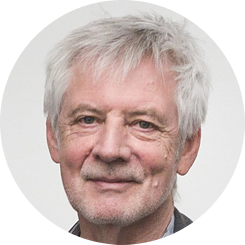 Photo (detail): Julia Vogt
First I’d like to express my respect for Hajnalka Somogyi and her OFF-Biennale in Budapest; for the strategy of self-empowerment and resistant energy in a repressive political system that suppresses critical voices no matter what their origins. However, the “bubble” that was mentioned is something we tend not to choose for ourselves, regardless of whether it functions as a protective space or as a stomping ground for like-minded people.
Photo (detail): Julia Vogt
First I’d like to express my respect for Hajnalka Somogyi and her OFF-Biennale in Budapest; for the strategy of self-empowerment and resistant energy in a repressive political system that suppresses critical voices no matter what their origins. However, the “bubble” that was mentioned is something we tend not to choose for ourselves, regardless of whether it functions as a protective space or as a stomping ground for like-minded people.We find ourselves in the bubble because we need symbiotic relationships and partnerships or because the relationships leave us no other option. The air in the art bubbles has become very thin, however, not only in Hungary and Poland. I still have a fairly comfortable existence in my curatorial filter bubble because I hardly have to search for partnerships myself – I have always been simply found. The networks are generated as if of their own accord through the project work.
To what extent do we allow ourselves to be instrumentalized?
“An artist begins to act politically the moment he resists the political abuse”, and: “Non-compliance means that the artist asks his questions behind the world determined by the politicians”, is what Werner Hofmann writes in his small publication “Kunst und Politik” (i.e. Art and Politics), which our Portofrei discourse has prompted me to re-read. To what extent do we allow ourselves to be instrumentalized? Is there not also such a thing as corruptible fabric in the art world?
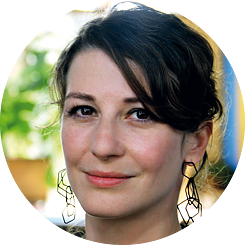 Photo (detail): Roger von Heereman / Konnektiv
The “festival of regions” that Gottfried Hattinger talks about seems to me to be a good example of the spaces that we create for ourselves in order to fill them with our thoughts. They are also a kind of bubble in which we allow ourselves the freedom to share and further develop our ideas with like-minded people.
Photo (detail): Roger von Heereman / Konnektiv
The “festival of regions” that Gottfried Hattinger talks about seems to me to be a good example of the spaces that we create for ourselves in order to fill them with our thoughts. They are also a kind of bubble in which we allow ourselves the freedom to share and further develop our ideas with like-minded people. Our individual filter bubbles are not simply informational echo chambers. As Hajnalka Somogyi explains, they can also be safe spaces that help us to focus our thoughts and tune out the “white noise” that is the deluge of information and opinions to which we are exposed. Who do we allow to enter our filter bubbles? Where do we find our collaborators, our mentors, our partners?
There are different strategies for generating encounters
This time I would like to know whether and how you seek out partnerships that will make possible and amplify your work. From Hungary to Brazil, artists and those who think differently are oppressed by authoritarian regimes and have their funding cut. When cooperating with governments is not an option, which other forms of support and which networks are available for artists that allow them to have an impact on a national level?
 Photo (detail): Csaba Aknay / Orbital Strangers
OFF-Biennale Budapest boycotts the Hungarian state-run art infrastructure, thus the project steers clear of public art spaces. This already places it outside a certain professional/art bubble; instead, our projects appear in public space, shops, cafés, industrial spaces, community centers etc., often also engaging with their context of presentation. The audience and the general media loves the adventure of exploring some hidden faces of the city, and this way the projects appear obviously less detached from everyday reality.
Photo (detail): Csaba Aknay / Orbital Strangers
OFF-Biennale Budapest boycotts the Hungarian state-run art infrastructure, thus the project steers clear of public art spaces. This already places it outside a certain professional/art bubble; instead, our projects appear in public space, shops, cafés, industrial spaces, community centers etc., often also engaging with their context of presentation. The audience and the general media loves the adventure of exploring some hidden faces of the city, and this way the projects appear obviously less detached from everyday reality. Taking the notion of the filter bubble politically, I have two answers.
- The near-full governmental control over the media puts us in a difficult situation when trying to reach wider audiences. In such media, the coverage is heavily one-sided: critical voices are mostly ignored, or they get aggressively denigrated as ‘communist’ or ‘gay propaganda’ (see Frida Kahlo!), which creates less than optimal conditions for interacting with those beyond one’s political comfort zone. Our projects have been mostly ignored so far by the official media-machine; we produce our own content to spread on social media. At the same time, we can’t rule out the possibility of some attack in the future, with the government and its media going on ever-wilder ideological rampage over an assumed international conspiracy against the country.
Voicing ideas in one’s own echo chamber is not to be undervalued
- In our view, voicing ideas in one’s own echo chamber is not to be undervalued. In a context of educated, independent-minded people leaving in flocks, and a depressingly powerful propaganda roaring up and down the land, one can feel somewhat discouraged and isolated with certain thoughts and sentiments. As long as a filter bubble can protect from despair and support one to carry on (which seems a prerequisite for seeing beyond), OFF is happy to help strengthening it.
 Photo (detail): Emilia Castioni
I process the “public space” so as defined by the network “Non Riservato”: places where individuals’ routines are at the mercy of the case and unpredictable encounters can generate dialogues between heterogeneous subjects. In the public space, relational artworks and collaborative approaches can disclose the thin margin between the individual and the “us”, as mentioned by Bernard Stiegler.
Photo (detail): Emilia Castioni
I process the “public space” so as defined by the network “Non Riservato”: places where individuals’ routines are at the mercy of the case and unpredictable encounters can generate dialogues between heterogeneous subjects. In the public space, relational artworks and collaborative approaches can disclose the thin margin between the individual and the “us”, as mentioned by Bernard Stiegler.That’s why, in a political perspective, I look at “passers-by” as a target and an object of study, and at the “dialogue” as a tool and a goal. Via one to one relationship, I deal with the concept of belonging through some topics on which everyone can express their own point of view (despite any cultural background) and to contribute to a new collective vision. Intricate structures (as labyrinth, catalogues, and Chinese boxes) allow multilayer access to the artwork playing with people’s curiosity.
In a political perspective, I look at the dialogue as a tool and a goal
For example, within my project Luminescenze (research realized in the frame of the Borderlight Collective collaboration), I map the places in which inhabitants would like to bring a different light in the nocturnal landscape of Milan. The project portraits citizens as activators of places, relations and resilience and at the same time it collects information outlining an alternative vision of the city by night. In this case, the involvement of the people has been overlaying a quantitative work, made using an online platform and social media, and a quality investigation, creating a series of collaborative mapping in the frame of convivial meetings in peripheral areas.
 Photo (detail): Julia Vogt
About ten years ago I took up my work as artistic director of Festival der Regionen in Upper Austria. For the first time I faced the challenge to put up artistic festivals in small towns where nobody seemed to take an interest in contemporary art. I had to get out of the comfort zone, say goodbye to those cultural institutions that had functioned as a protective area and step out into the public space to expose myself and my artistic work to the comments of the general public.
Photo (detail): Julia Vogt
About ten years ago I took up my work as artistic director of Festival der Regionen in Upper Austria. For the first time I faced the challenge to put up artistic festivals in small towns where nobody seemed to take an interest in contemporary art. I had to get out of the comfort zone, say goodbye to those cultural institutions that had functioned as a protective area and step out into the public space to expose myself and my artistic work to the comments of the general public.From the very beginning I aimed at a light-footed balance of artistic work and social action within my work. Talking to people face to face far away from the usual experts talk, it was actually easier than I had thought to convey messages that can be grotesque and weird at times. In doing so, I always aimed at making the locals join artistic processes without misusing them for my own needs.
We should try and be a bit less uptight and let our spirit dance instead
And when it comes to right-wing populist tendencies … I might give you my opinion next time.
 Photo (detail): Roger von Heereman / Konnektiv
We live in the age of information overload and digitally induced short attention spans. Studies are showing correlations between fake news and viral hoaxes spread online, the deluge of new information that’s constantly pouring into social media and our short attention spans.
Photo (detail): Roger von Heereman / Konnektiv
We live in the age of information overload and digitally induced short attention spans. Studies are showing correlations between fake news and viral hoaxes spread online, the deluge of new information that’s constantly pouring into social media and our short attention spans.In addition, the filter bubble phenomenon results in opinion silos and lack of meaningful exchange of opinions between people of different interest groups on social media platforms. Creating meaningful and impactful engagement is a challenge of our digital age.
How do we reach those outside of our political comfort zone?
You all reside in different countries in Europe, Hungary, Austria and Italy. As outlined in the previous “Freepost” debate, we are having this debate in light populist power gains across Europe, in particular in the countries you live in. I would like to begin our conversation with a focus on the local, the closest possible space for interaction in this globalized, increasingly digital and immaterial world – the cities and towns where you live and work in. What are your strategies and tools for interaction in with your local environment? Do you use the public space and how do you try and interact with those outside your filter bubble?
Partner
The current edition of our digital debate “Freepost” is being held in cooperation with the Internationale Gesellschaft der Bildenden Künste (IGBK). In November 2017, the IGBK organized the symposium “Fragile Affinities” together with the Akademie der Künste, Berlin. The topic of these “Freepost” is derived from the questions discussed there.Discussants
 Photo (detail): Emilia Castioni
Simona Da Pozzo is a performance and video artist living in Milan. Together with other artists, she works on various projects at her Vegapunk studio. Furthermore, since 2013 Simona Da Pozzo has been making her atelier available to other artists as part of the “Artist Hosting Artists (AHA)”, “Camouflage” and “AUBatVPK” programmes.
Photo (detail): Emilia Castioni
Simona Da Pozzo is a performance and video artist living in Milan. Together with other artists, she works on various projects at her Vegapunk studio. Furthermore, since 2013 Simona Da Pozzo has been making her atelier available to other artists as part of the “Artist Hosting Artists (AHA)”, “Camouflage” and “AUBatVPK” programmes. Photo (detail): Julia Vogt
Gottfried Hattinger is a freelance curator and book designer who lives in Ottensheim near Linz. He studied at Linz Art School and from 1987 to 1991 was artistic director of the “ars electronica” festival at the Brucknerhaus in Linz. Gottfried Hattinger creates and designs festivals and exhibitions, primarily in the areas of performance and theatre, visual art, sound art and music, and old and new media.
Photo (detail): Julia Vogt
Gottfried Hattinger is a freelance curator and book designer who lives in Ottensheim near Linz. He studied at Linz Art School and from 1987 to 1991 was artistic director of the “ars electronica” festival at the Brucknerhaus in Linz. Gottfried Hattinger creates and designs festivals and exhibitions, primarily in the areas of performance and theatre, visual art, sound art and music, and old and new media.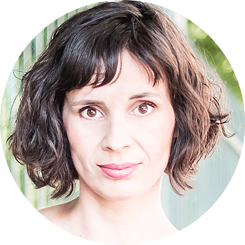 Photo (detail): Csaba Aknay / Orbital Strangers
Hajnalka Somogyi is a curator of contemporary art. Since 2014 she has worked as director and co-curator of the OFF Biennale in Budapest, Hungary’s largest independent art project that was founded on Somogyi’s initiative. Among other things, Hajnalka Somogyi was an editor at artmagazin.hu and curator of the Ludwig Museum of Contemporary Art in Budapest.
Photo (detail): Csaba Aknay / Orbital Strangers
Hajnalka Somogyi is a curator of contemporary art. Since 2014 she has worked as director and co-curator of the OFF Biennale in Budapest, Hungary’s largest independent art project that was founded on Somogyi’s initiative. Among other things, Hajnalka Somogyi was an editor at artmagazin.hu and curator of the Ludwig Museum of Contemporary Art in Budapest.
Moderator
 Photo (detail): Roger von Heereman / Konnektiv
Geraldine de Bastion is a political scientist who advices public institutions, NGOs and business enterprises on the use of digital technologies. Her expertise is valued by internet activists and bloggers around the world. She is a member of Digitale Gesellschaft e.V., which fights for basic rights and consumer protection in the digital domain. Each year she is a sought-after curator and presenter at the international internet conference re:publica.
Photo (detail): Roger von Heereman / Konnektiv
Geraldine de Bastion is a political scientist who advices public institutions, NGOs and business enterprises on the use of digital technologies. Her expertise is valued by internet activists and bloggers around the world. She is a member of Digitale Gesellschaft e.V., which fights for basic rights and consumer protection in the digital domain. Each year she is a sought-after curator and presenter at the international internet conference re:publica.